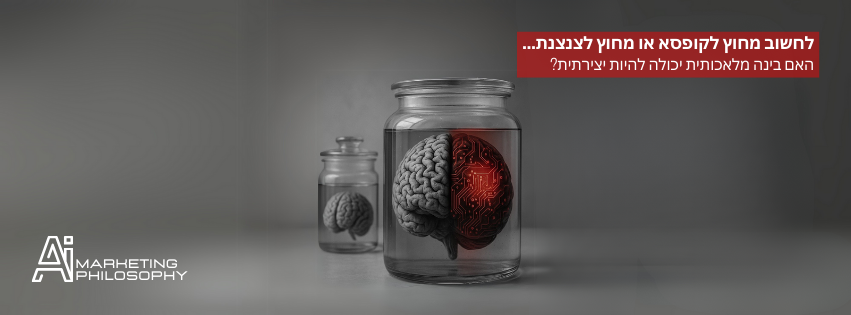
How far can we really push AI when it comes to creativity?
When we talk about creativity—especially in the world of marketing—we’re referring to the ability to tap into the human mind, intuition, gut feelings, curiosity, and humor to spark an emotional connection with an audience. The magic of creativity often lies in its ability to surprise, move, and touch something deeper.
But what happens when we introduce artificial intelligence into this equation? After all, AI is built on existing knowledge, accepted data, and statistical patterns—exactly the kind of constraints that creative thinking aims to break through.
Whether you’re working on a marketing strategy, developing a new brand, or crafting a powerful brand identity, creativity is the key to standing out. But how does that work when AI is part of the creative process?
The human brain has two main hemispheres: the right side, associated with creativity, design, and intuition, and the left side, responsible for language, logic, and analytical thinking. While human creativity stems primarily from the right brain, AI functions more like the left brain, relying on data analysis and pattern recognition.
AI still struggles to “think outside the box” because it draws from what’s already known. It lacks human intuition and emotional understanding. Its outputs are often a synthesis of existing content, rather than a spark of something radically new.
So the question is: how far can we really push AI’s creative boundaries?
And how can we break out of the conventional box?
One way is through creative prompting—asking AI to mix and match styles that wouldn’t normally intersect. For example, asking it to create a marketing campaign that blends surrealist art with a tech-driven tone, or to come up with a concept for a product that doesn’t yet exist, and simulate potential audience reactions.
This kind of collaboration—human creativity paired with AI capabilities—might just lead us to places we’ve never imagined.
But does the future of creative work really lie in this kind of functional partnership?
Or will we eventually see less need for human creatives, as we’re already witnessing in other professions where AI is starting to take over?
Looking to craft winning creative, branding concepts, or a solid marketing strategy? Leave your details and we’ll get back to you shortly. >> |
